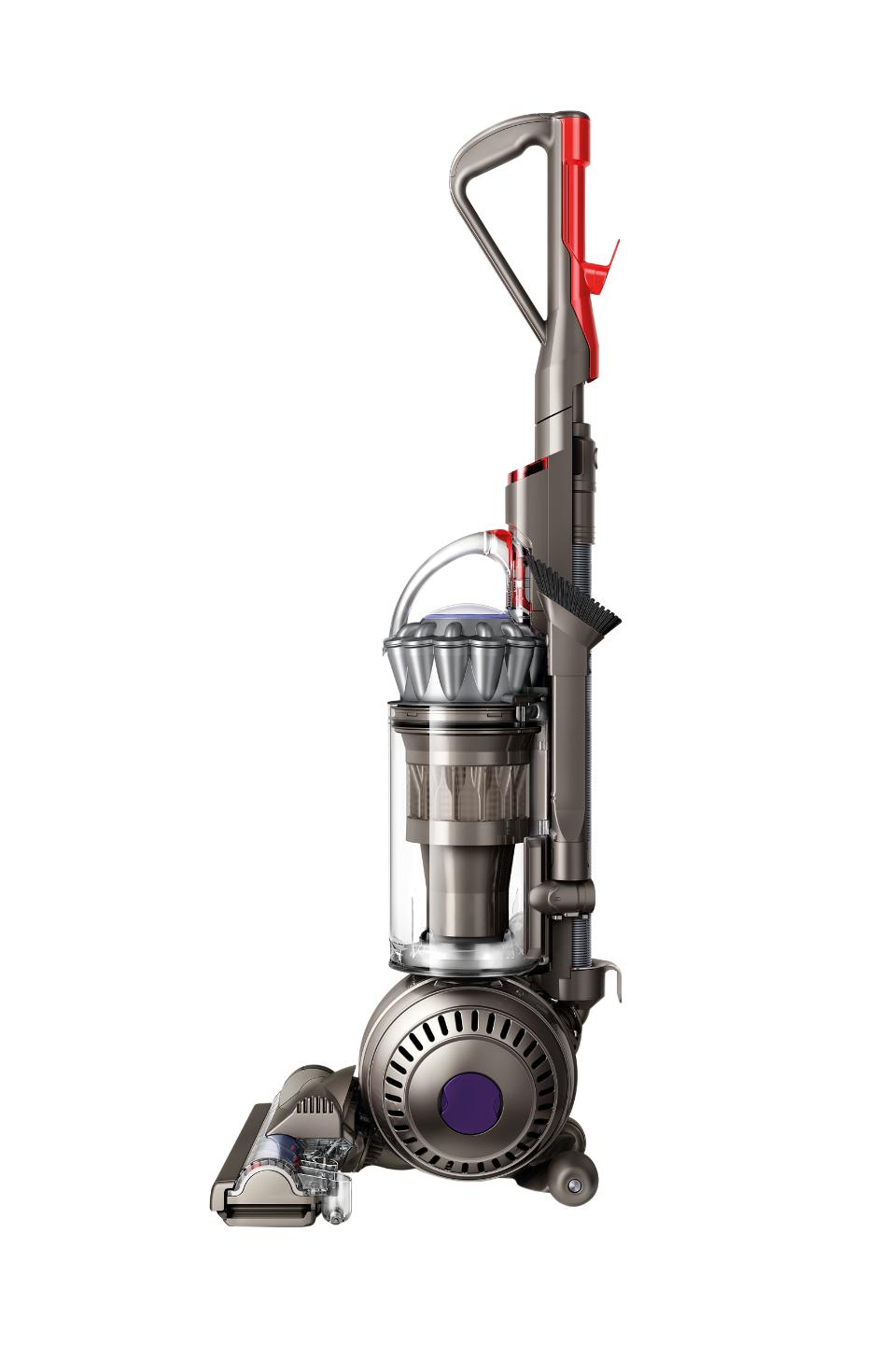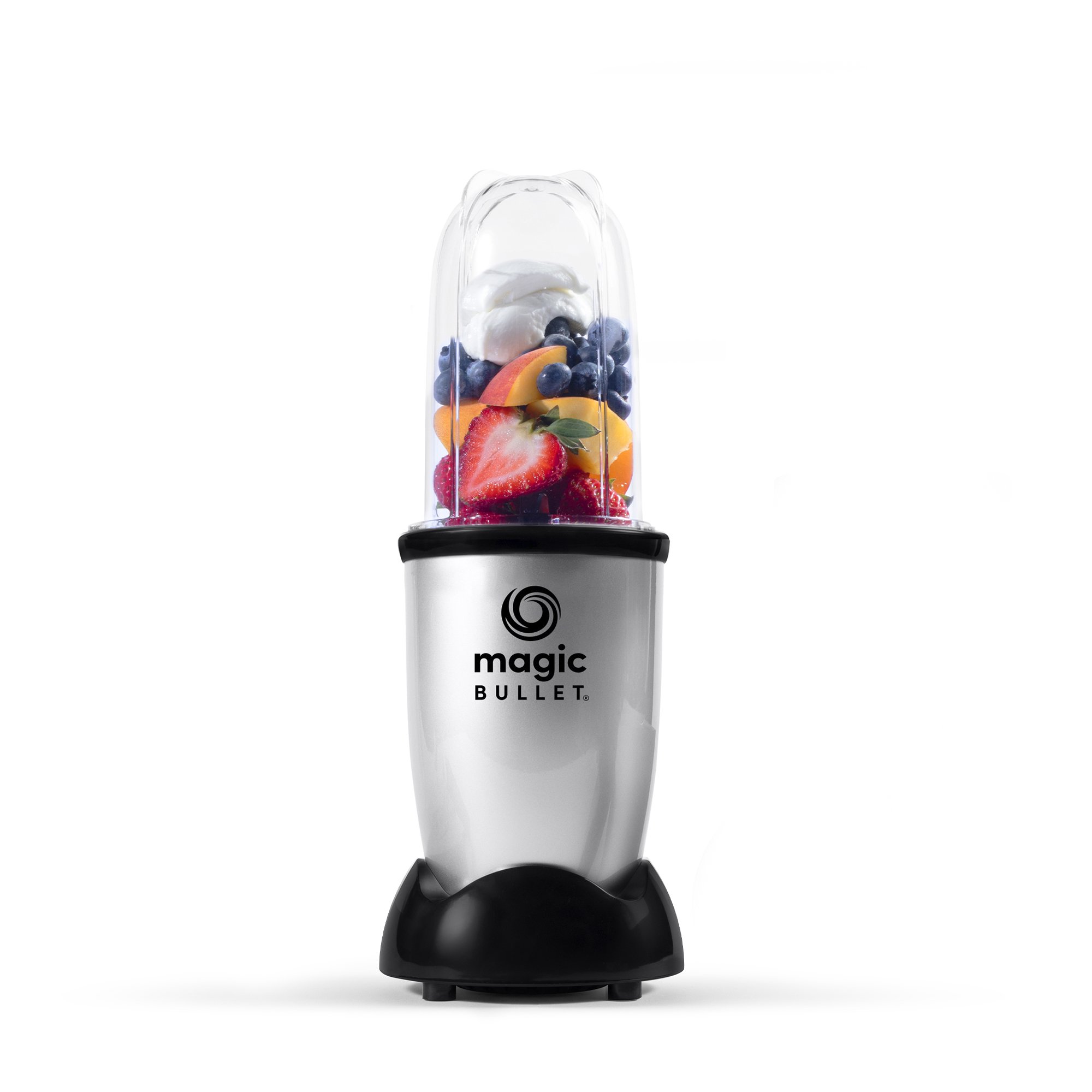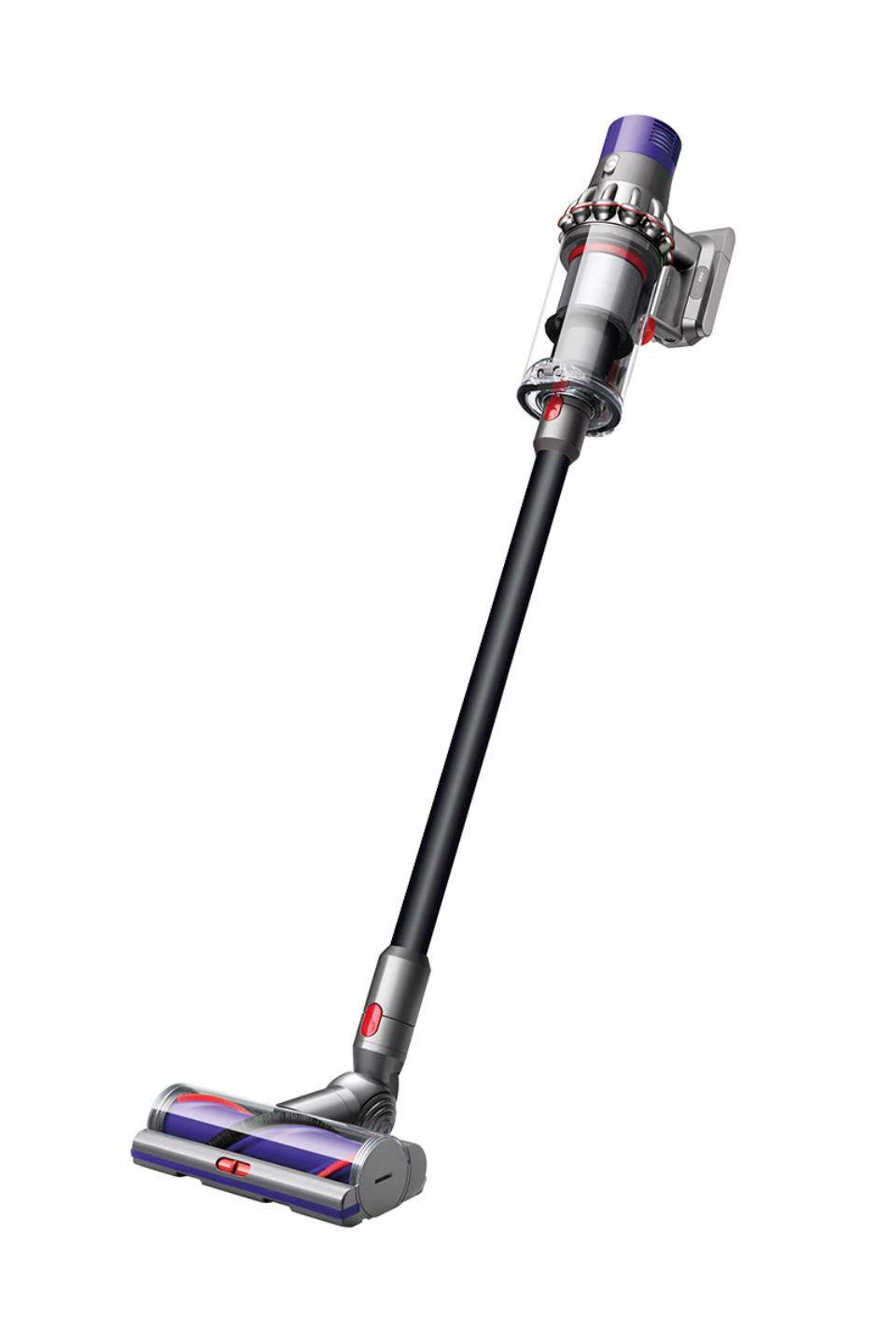GE 30 in. 6.6 cu. ft. Double Oven Electric Range with Steam-Cleaning Convection Oven in Stainless Steel
Convection includes a rear fan for faster, more even baking. 12″/9″ power boil element produces rapid, powerful heat. Steam clean oven cleans the oven cavity without scrubbing.
At GE Appliances, we bring good things to life, by designing and building the world’s best appliances. Our goal is to help people improve their lives at home by providing quality appliances that were made for real life. Whether it’s enjoying the tradition of making meals from scratch or tackling a mountain of muddy jeans and soccer jerseys, GE Appliances are crafted to support any and every task in the home.
- Convection – This convection oven cooks and browns more evenly, using a rear fan to circulate hot air
- 12 in./9 in. Power Boil Element – A power boiler produces concentrated heat for rapid boiling in a flexible 12 in./9 in. burner size, so you spend less time waiting and more time cooking
- 9 in./6 in. Power Boil Element – A power boiler produces concentrated heat for rapid boiling in a flexible 9 in./6 in. burner size, so you spend less time waiting and more time cooking
- Warming Mode – A warming mode that lets you to serve dishes at the right time and temperature
- Fifth Element Warming Zone – A convenient low-heat warming zone provides even temperature control for foods on the cooktop
- Steam Clean – A steam cleaning option cleans the oven cavity in a 30-minute cycle with less odor and heat
- Wall-to-Wall Bake Element – An 8-pass bake element in the upper oven heats a large cooking area evenly
- Fast Preheat – The upper oven preheats quickly and evenly with a speedy preheat feature
- Large Capacity Double Oven – This large double-oven lets you cook multiple items at the same time thanks to its 6.6 cu. ft. total capacity
- Limited 1-year entire appliance warranty
- Aproximate Dimensions (in.) – 47 in. H x 29-7/8 in. W x 28-1/4 in. D
Additional information
| Depth With Door(s) Open 90 Degrees (In.) | 45 |
|---|---|
| Element No.1 Size (In.) | 12 |
| Element No.2 Size (In.) | 6 |
| Element No.3 Size (In.) | 9 |
| Element No.4 Size (In.) | 6 |
| Element No.5 Size (In.) | 6 |
| Lower Oven Interior Depth x Height x Width (in) | 18.25 x 17.5 x 24 |
| Product Depth x Height x Width (in) | 28.25 x 47 x 29.88 |
| Range Size (Width) (in) | 30 |
| Upper Oven Interior Depth x Height x Width (in) | 18.25 x 8.88 x 24 |
| Certifications and Listings | UL Listed |
| Manufacturer Warranty | Limited 1 year entire appliance warranty |
30 may refer to:
- 30 (number), the natural number following 29 and preceding 31
- one of the years 30 BC, AD 30, 1930, 2030
6 (six) is the natural number following 5 and preceding 7. It is a composite number and the smallest perfect number.
Cleaning is the process of removing unwanted substances, such as dirt, infectious agents, and other impurities, from an object or environment. Cleaning is often performed for aesthetic, hygienic, functional, safety, or environmental protection purposes. Cleaning occurs in many different contexts, and uses many different methods. Several occupations are devoted to cleaning.
Convection is single or multiphase fluid flow that occurs spontaneously due to the combined effects of material property heterogeneity and body forces on a fluid, most commonly density and gravity (see buoyancy). When the cause of the convection is unspecified, convection due to the effects of thermal expansion and buoyancy can be assumed. Convection may also take place in soft solids or mixtures where particles can flow.
Convective flow may be transient (such as when a multiphase mixture of oil and water separates) or steady state (see Convection cell). The convection may be due to gravitational, electromagnetic or fictitious body forces. Heat transfer by natural convection plays a role in the structure of Earth's atmosphere, its oceans, and its mantle. Discrete convective cells in the atmosphere can be identified by clouds, with stronger convection resulting in thunderstorms. Natural convection also plays a role in stellar physics. Convection is often categorised or described by the main effect causing the convective flow; for example, thermal convection.
Convection cannot take place in most solids because neither bulk current flows nor significant diffusion of matter can take place. Granular convection is a similar phenomenon in granular material instead of fluids. Advection is fluid motion created by velocity instead of thermal gradients. Convective heat transfer is the intentional use of convection as a method for heat transfer. Convection is a process in which heat is carried from place to place by the bulk movement of a fluid and gases.
An oven is a tool which is used to expose materials to a hot environment. Ovens contain a hollow chamber and provide a means of heating the chamber in a controlled way. In use since antiquity, they have been used to accomplish a wide variety of tasks requiring controlled heating. Because they are used for a variety of purposes, there are many different types of ovens. These types differ depending on their intended purpose and based upon how they generate heat.
Ovens are often used for cooking, where they can be used to heat food to a desired temperature. Ovens are also used in the manufacturing of ceramics and pottery; these ovens are sometimes referred to as kilns. Metallurgical furnaces are ovens used in the manufacturing of metals, while glass furnaces are ovens used to produce glass.
There are many methods by which different types of ovens produce heat. Some ovens heat materials using the combustion of a fuel, such as wood, coal, or natural gas, while many employ electricity. Microwave ovens heat materials by exposing them to microwave radiation while electric ovens and electric furnaces heat materials using resistive heating. Some ovens use forced convection, the movement of gases inside the heating chamber, to enhance the heating process, or, in some cases, to change the properties of the material being heated, such as in the Bessemer method of steel production.
Stainless may refer to:
- Cleanliness, or the quality of being clean
- Stainless steel, a corrosion-resistant metal alloy
- Stainless Games, a British video game developer
- Stainless Broadcasting Company, a TV broadcaster based in Michigan, US
- Stainless Banner, the second national flag of the Confederate States of America
Steam is a substance containing water in the gas phase, often mixed with air and/or an aerosol of liquid water droplets. This may occur due to evaporation or due to boiling, where heat is applied until water reaches the enthalpy of vaporization. Steam that is saturated or superheated (water vapor) is invisible; however, wet steam, a visible mist or aerosol of water droplets, is often referred to as "steam".: 6
Water increases in volume by 1,700 times at standard temperature and pressure; this change in volume can be converted into mechanical work by steam engines such as reciprocating piston type engines and steam turbines, which are a sub-group of steam engines. Piston type steam engines played a central role in the Industrial Revolution and modern steam turbines are used to generate more than 80% of the world's electricity. If liquid water comes in contact with a very hot surface or depressurizes quickly below its vapor pressure, it can create a steam explosion.
Steel is an alloy of iron and carbon with improved strength and fracture resistance compared to other forms of iron. Because of its high tensile strength and low cost, steel is one of the most commonly manufactured materials in the world. Steel is used in buildings, as concrete reinforcing rods, in bridges, infrastructure, tools, ships, trains, cars, bicycles, machines, electrical appliances, furniture, and weapons.
Iron is always the main element in steel, but many other elements may be present or added. Stainless steels, which are resistant to corrosion and oxidation, typically need an additional 11% chromium.
Iron is the base metal of steel. Depending on the temperature, it can take two crystalline forms (allotropic forms): body-centred cubic and face-centred cubic. The interaction of the allotropes of iron with the alloying elements, primarily carbon, gives steel and cast iron their range of unique properties. In pure iron, the crystal structure has relatively little resistance to the iron atoms slipping past one another, and so pure iron is quite ductile, or soft and easily formed. In steel, small amounts of carbon, other elements, and inclusions within the iron act as hardening agents that prevent the movement of dislocations.
The carbon in typical steel alloys may contribute up to 2.14% of its weight. Varying the amount of carbon and many other alloying elements, as well as controlling their chemical and physical makeup in the final steel (either as solute elements, or as precipitated phases), impedes the movement of the dislocations that make pure iron ductile, and thus controls and enhances its qualities. These qualities include the hardness, quenching behaviour, need for annealing, tempering behaviour, yield strength, and tensile strength of the resulting steel. The increase in steel's strength compared to pure iron is possible only by reducing iron's ductility.
Steel was produced in bloomery furnaces for thousands of years, but its large-scale, industrial use began only after more efficient production methods were devised in the 17th century, with the introduction of the blast furnace and production of crucible steel. This was followed by the Bessemer process in England in the mid-19th century, and then by the open-hearth furnace. With the invention of the Bessemer process, a new era of mass-produced steel began. Mild steel replaced wrought iron. The German states were the major steel producers in Europe in the 19th century. American steel production was centered in Pittsburgh, Bethlehem, Pennsylvania, and Cleveland until the late 20th century.
Further refinements in the process, such as basic oxygen steelmaking (BOS), largely replaced earlier methods by further lowering the cost of production and increasing the quality of the final product. Today more than 1.6 billion tons of steel is produced annually. Modern steel is generally identified by various grades defined by assorted standards organizations. The modern steel industry is one of the largest manufacturing industries in the world, but also one of the most energy and greenhouse gas emission intense industries, contributing 8% of global emissions. However, steel is also very reusable: it is one of the world's most-recycled materials, with a recycling rate of over 60% globally.
With or WITH may refer to:
- With, a preposition in English
- Carl Johannes With (1877–1923), Danish doctor and arachnologist
- With (character), a character in D. N. Angel
- With (novel), a novel by Donald Harrington
- With (album), a 2014 album by TVXQ
- With (EP), a 2021 EP by Nam Woo-hyun






by Nanny
I use my small oven more love it
by Patricia
love the air fryer feature.
by Lauriea
After another brand oven failed after 14 months, we couldn’t be happier to have the GE double oven. We look forward to many great family meals in our new oven!
by Jeano
Look ok so far. I know it a good quality coming from GE.
by Jessica
It exceeded my expectations! The double oven makes it easy to cook at two different settings at the same time. The built-in air fryer does a great job of cooking the food evenly. Super happy with my purchase.
by Amy
Looks awesome! Lots of great features and easy to use.
by Tazzie
so far it is great looked at floor model and did side by side to another brand. their ovens did not have bottom heat elements . number 1 reason to go with the GE.
by Miser
we like the different features that each appliance has, the dishwasher is quiet, stove work very well love the part on the refrigerator that fill the cup up by it self.
by Nicole
So far i am really liking the oven. It is taking awhile for the smell to go away when using but aside from that, it’s great so far!